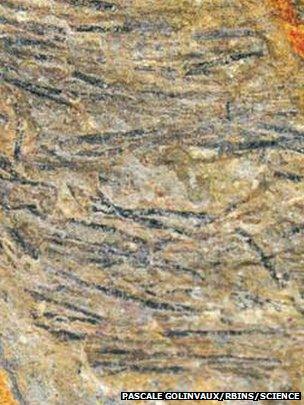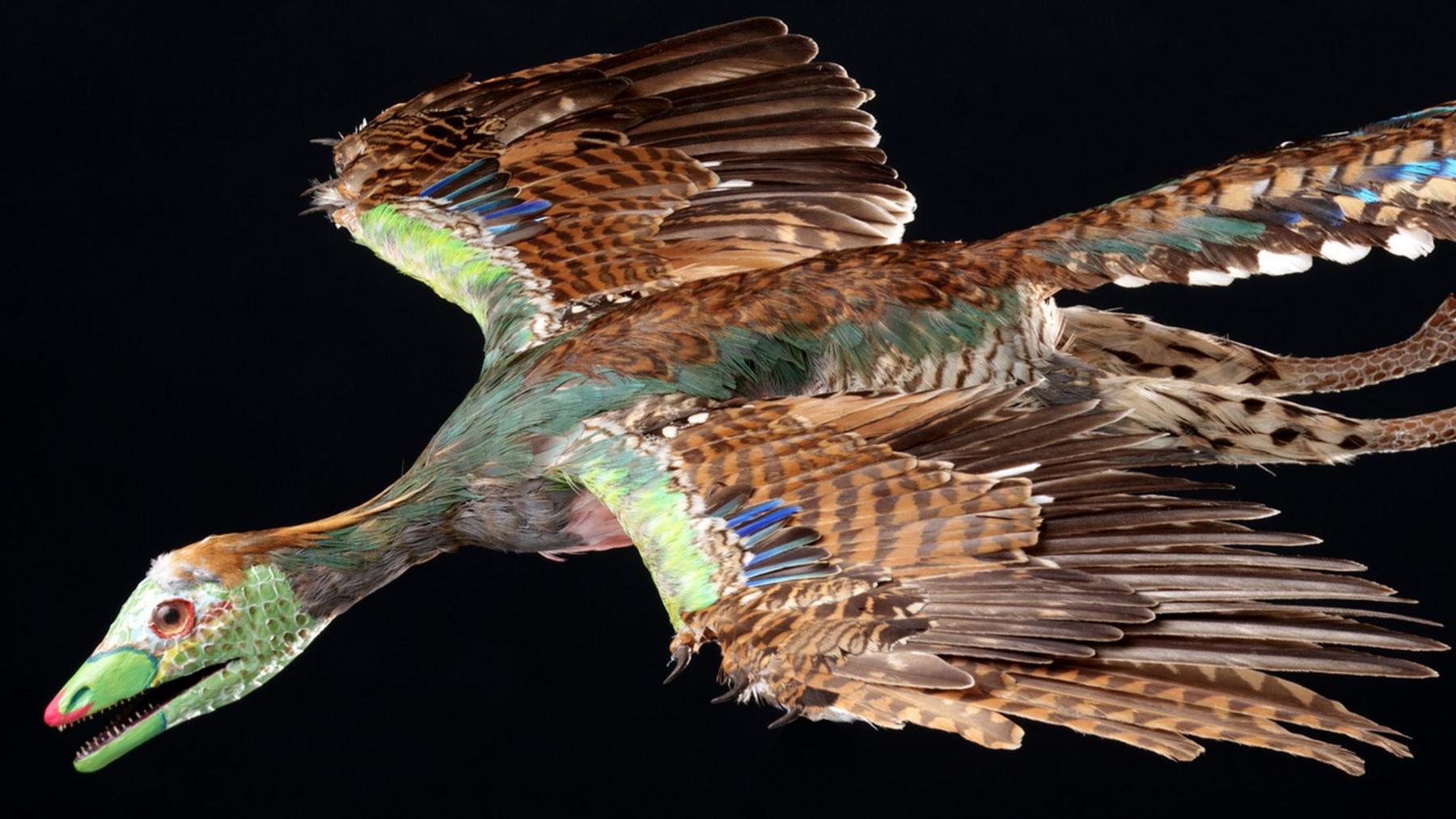'Fluffy and feathery' dinosaurs were widespread
- Published
Kulindadromeus zabaikalicus' discovery in Siberia challenges our understanding of how dinosaurs evolved, as Pallab Ghosh reports (UK users only)
All dinosaurs were covered with feathers or had the potential to grow feathers, a study suggests.
The discovery of 150-million-year-old fossils in Siberia indicates that feathers were much more widespread among dinosaurs than previously thought.
The find "has completely changed our vision of dinosaurs", the lead researcher told BBC News.
The details have been published in the journal Science, external.
The creature, called Kulindadromeus zabaikalicus, was about 1m long, with a short snout, long hind legs, short arms, and five strong fingers.
Its teeth show clear adaptations for chewing plants.
Until now, fossilised evidence of feathery dinosaurs has come from China and from a meat eating group called theropods.
The latest discovery, in Russia, is from a completely separate group of plant-eating dinosaurs called ornithischians - which account for half of all dinosaurs.
Fluffy covering
The find takes the origin of feathers millions of years further back in time than had previously been thought, said Dr Pascal Godefroit of the Royal Belgian Institute of Natural Sciences in Brussels, Belgium, who led the research.

Belgian and Russian researchers discovered an area filled with ancient dinosaur bones in Kulinda, south eastern Siberia
"It was a big surprise," he said.
"The fact that feathers have now been discovered in two distinct groups, theropods in China and ornithischians in Russia means that the common ancestor of these species which might have existed 220 million years ago also probably had feathers."
The discovery has "completely changed our vision of dinosaurs", he added.
"Instead of thinking of dinosaurs as dry, scary scaly creatures a lot of them actually had a fluffy, downy covering like feathers on a chick," said co-researcher Dr Maria McNamara of Cork University in Ireland.
Alternative view
So do all the pictures of dinosaurs in children's books need to be redrawn to make creatures like Triceratops, Stegosaurus, Tyrannosaurus rex and the vicious Velociraptor, fluffier and cuter?

The researchers believe the dark areas on this dinosaur fossil are remains of the earliest feathers
Perhaps a little bit, according to Professor Mike Benton, of Bristol University, who was also involved in the work.
"Our research doesn't mean that all dinosaurs had feathers, especially as adults," he told BBC News.
"Some will have had feathers as young animals and kept them throughout their lives. Others may have lost feathers as they grew up, and became large enough not to need them, or replaced feathers with scales or relied on bony plates in the skin for protection."
The key point is that dinosaurs were all initially feathered and warm blooded, confirmation of an idea that has prevailed for years, he said.
"Feathers were used first for insulation and signalling; they only later became adapted for flight."
But Dr Paul Barrett of the Natural History Museum in London, has doubts.
"Most feathers have a branching structure," he told BBC News.
"Instead these look like little streamers coming from a central plate. No bird has that structure in any part of its plumage and none of the developmental models that biologists use to understand the evolution of feathers includes a stage that has anything like that kind of anatomy."
- Published3 July 2014

- Published1 August 2013

- Published25 October 2012
